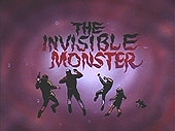was the first animated action-adventure cartoon, with a heavy influence of comic book stylings. The show featured more mature themes, and more realistic art and characters than Hanna-Barbera's previous cartoon programs. The success of the show spawned a host of copies for ABC, including
.
The series presented pre-teen Jonny Quest, who, along with mystical Indian friend Hadji, pet dog Bandit, Jonny’s super-scientist father Dr. Benton Quest, and government intelligence agent/bodyguard/pilot Race Bannon, investigated strange goings-on all over the world. Episodes of Jonny Quest blended mystery, adventure, action, intrigue, scientific marvels, and humor as the group traveled everywhere from the Sargasso Sea to equatorial Africa.
After having worked on Cambria Productions' 1962 animated television series
Space Angel, comic book artist Doug Wildey moved over to design work at the Hanna-Barbera studio. He was asked to conceive a new series based on the popular radio drama adventure character Jack Armstrong, the All-American Boy.
Wildey wrote and drew a presentation, using such magazines as
Popular Science,
Popular Mechanics, and
Science Digest "to project what would be happening 10 years hence", and devising or fancifully updating such devices as a "snowskimmer" and hydrofoils. When Hanna-Barbera could not or would not obtain the rights to the Jack Armstrong character, the studio had Wildey rework the concept in a more original direction. Classic movies, over-the-top comic books and even the James Bond movie Dr. No where all thrown into the mix. Wildey said he "went home and wrote Jonny Quest that night— which was not that tough." Wildey would work on other animation projects, but it was with his work on Jonny Quest that he reached his widest audience, bringing a comic book sense of design and style to television cartoons. Wildey did not design the more cartoonishly drawn, pet bulldog, Bandit, which was designed by animator Dick Bickenbach.
Although they do not appear in any episode, scenes from the Jack Armstrong test film were incorporated into the Jonny Quest closing credits. They are the scenes of Jack Armstrong and Billy Fairfield escaping from African warriors by hovercraft. The test sequence and a number of drawings and storyboards by Wildey were used to sell the series to ABC and sponsors.
The Saturday-morning TV animated series Jonny Quest debuted on ABC on September 18, 1964. As comics historian Daniel Herman wrote:
Wildey's designs on Jonny Quest gave a cartoon a distinctive look, with its heavy blacks [i.e. shading and shadow] and its Caniff-inspired characters... The show was an action/adventure story involving the feature's namesake, an 11-year-old boy. The cast of characters included Jonny's kid sidekick, named Hadji, Jonny's globetrotting scientist dad... and the group's handsome bodyguard, secret agent Race Bannon, who looks as if he stepped out of the pages of [Caniff's comic strip] Steve Canyon... The look of Jonny Quest was unlike any other cartoon television show of the time, with its colorful backgrounds, and its focus on the characters with their jet packs, hydrofoils, and lasers.
Jonny Quest became a target of parental watchdog group Action for Children's Television (ACT) for its multiple onscreen deaths, murder attempts, use of firearms and deadly weapons, depictions of monsters, and tense moments. Reruns were taken off the air in 1972, but returned to Saturday morning, in edited form, sporadically afterward.


 ...
...

 ...
...
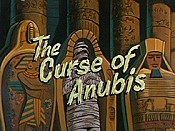
 ...
...
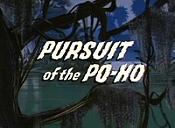
 ...
...

 ...
...

 ...
...

 ...
...

 ...
...

 ...
...

 ...
...
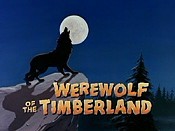
 ...
...
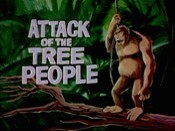
 ...
...

 ...
...
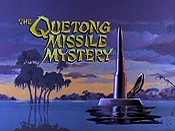
 ...
...

 ...
...

 ...
...

 ...
...








